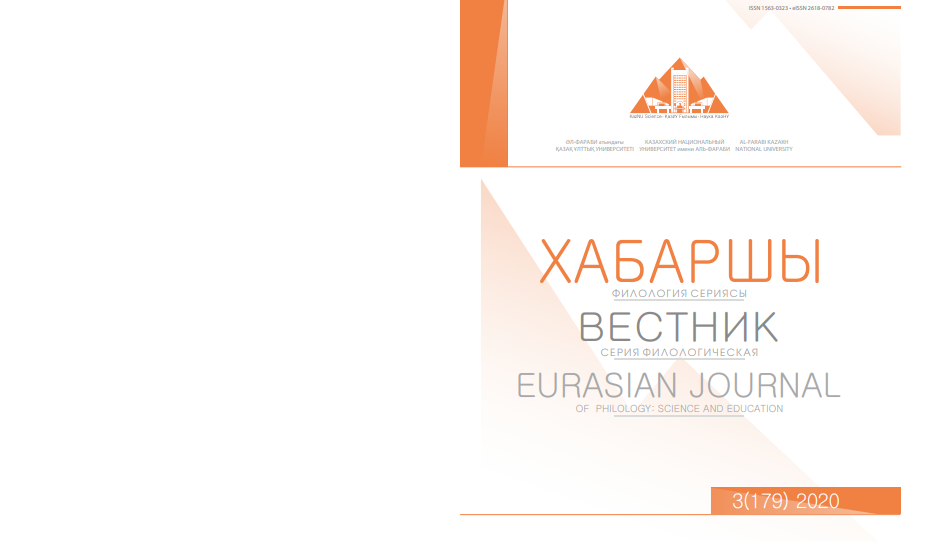The issues of language usage and language interference (on the examples of bilingual’s speech)
DOI:
https://doi.org/10.26577/EJPh.2020.v179.i3.ph10Abstract
The language processes taking place in Kazakhstani society continue to attract the attention of linguists, sociologists, political scientists, ethnologists, educators and psychologists. Today, researchers are focused on changing the functional status and value orientations in relation to the Kazakh language. Over the past twenty years, the Kazakh language, having become the state language of the country, began to occupy positions confidently that correspond to this status in regulated areas of communication (politics, paperwork, science, education, etc.). And as a result, a change in the place and role of the Kazakh language in bilingualism. This article is devoted to the study of Russian-Kazakh bilingualism and its influence on the speech behavior of bilinguals. This article presents an overview of the bilingualism classifications, special attention is paid to the metalanguage of the study. Based on a lexicographic sources’review, works of domestic and foreign researchers on bilingualism theory, the authors give an example of various interpretations of the terms “first language”, “second language”, “family language”, “mother tongue (native language)”, discussing factors that contribute to and / or impede the formation of two languages, the use of languages and their influence on the formation of bilingual. The article describes the preliminary results of experimental studies of the language and speech of Kazakh bilinguals with the Kazakh language as L2., the analysis of usage phenomena at the lexical, phonetic and grammatical levels, fixed with the help of various research methods and techniques was carried out.






